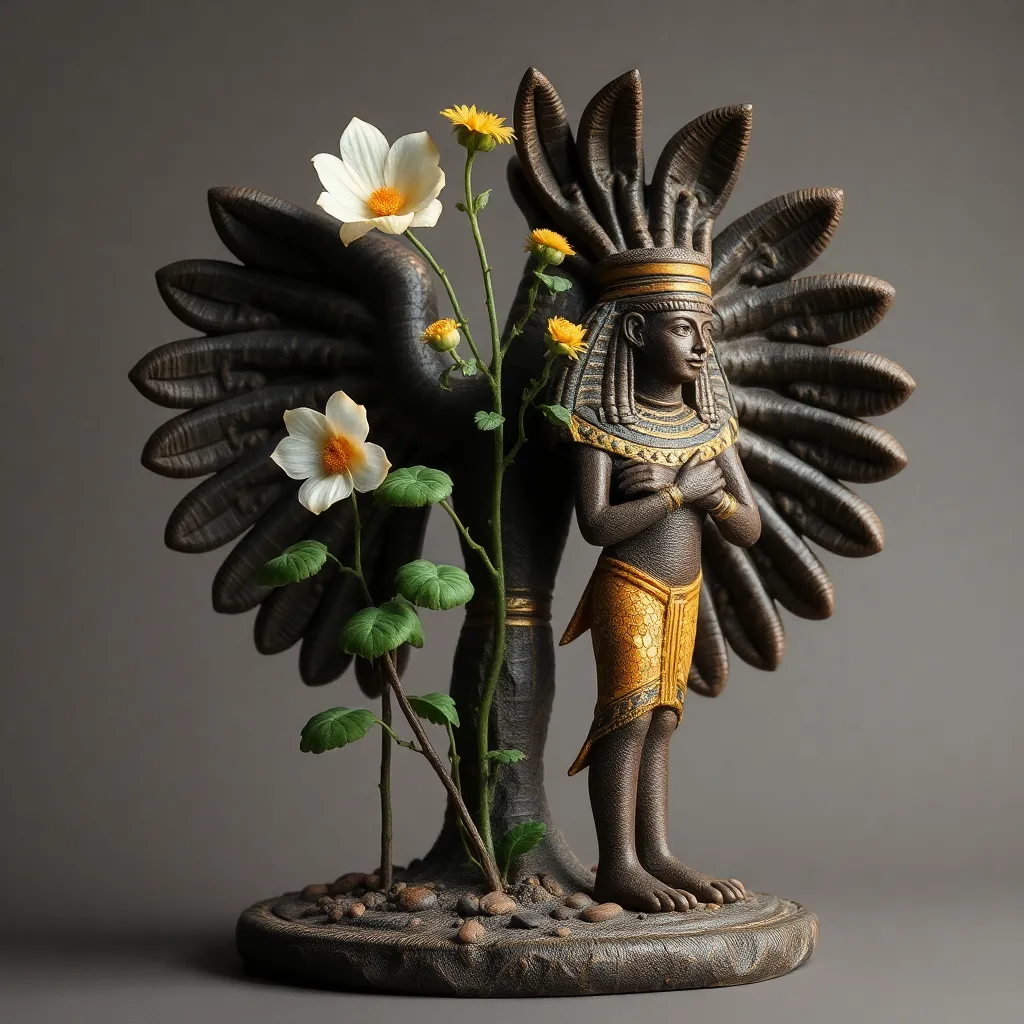The Role of Plants in Egyptian Fertility Myths
I. Introduction
Egyptian mythology is a rich tapestry of beliefs and stories that shaped the ancient civilization’s understanding of the world around them. It encompassed a variety of themes including creation, death, the afterlife, and fertility. Fertility, in particular, was crucial to ancient Egyptians, as it not only pertained to human reproduction but also to agriculture and the thriving of society itself.
In ancient Egypt, the ability to produce offspring and ensure bountiful harvests was intertwined with their religious beliefs. This article aims to explore the vital role of plants in Egyptian fertility myths, highlighting how these natural elements were not just essential for sustenance but also held profound symbolic significance in their mythology.
II. Fertility in Ancient Egyptian Culture
Fertility in the context of ancient Egypt was defined broadly, encompassing both human reproduction and agricultural productivity. The ancient Egyptians viewed fertility as a divine gift, essential for the continuity of life and the prosperity of their society.
Societal views on fertility emphasized the importance of family and lineage. The ability to bear children was not only a personal blessing but also a communal responsibility. Key deities associated with fertility included:
- Isis: The goddess of motherhood and fertility, often depicted with symbols of nourishment.
- Horus: Associated with kingship and protection, his myths also touch on fertility themes.
- Min: The god of fertility and harvest, often depicted with an erect phallus to symbolize potency.
III. Symbolism of Plants in Egyptian Fertility Myths
Plants played a significant role in Egyptian fertility myths, with certain species becoming symbols of life and abundance. Notable plants linked to fertility include:
- Papyrus: Often symbolizing the marshy lands of the Nile, it was associated with creation and rebirth.
- Lotus: A symbol of purity and rebirth, it was also linked to the sun and the cycle of life.
The symbolic meanings of these plants reflect the interplay between nature and mythology in ancient Egypt. They were not merely elements of the environment but were imbued with spiritual significance, often representing the duality of life and death.
IV. The Lotus Flower: A Central Figure in Fertility Myths
The lotus flower holds a special place in Egyptian culture, often considered a symbol of rebirth and renewal. Historical significance is evident in its frequent appearance in art and architecture, where it signifies the sun and creation.
Mythological stories involving the lotus are plentiful. One famous tale describes how the sun god Ra emerged from a lotus flower at the beginning of time, highlighting the flower’s association with life and fertility. Additionally, the lotus was believed to have aphrodisiac qualities, further cementing its place in fertility rituals.
Artistic representations of the lotus can be found in various ancient artifacts, including pottery, jewelry, and temple reliefs, showcasing its revered status in society.
V. Papyrus and Its Role in Fertility Rituals
Papyrus was not only essential for writing and record-keeping in ancient Egypt; it also held significance in fertility rituals. Used in various aspects of daily life, papyrus was intertwined with Egyptian spirituality and agricultural practices.
Rituals involving papyrus often included offerings to the gods, where papyrus was used in ceremonial decorations or as part of the offerings themselves. The connection between papyrus and the Nile’s fertility is profound, as the annual flooding of the Nile brought nutrient-rich silt that allowed papyrus to flourish, symbolizing the cycle of life and abundance.
VI. Other Plants and Their Associations with Fertility
In addition to papyrus and lotus, other key plants played vital roles in Egyptian fertility myths. Some of these include:
- Barley: A staple food that symbolized sustenance and fertility.
- Wheat: Integral to bread-making, wheat was associated with nourishment and abundance.
Myths and stories surrounding these plants often emphasized their importance in agricultural cycles, which were crucial for the survival of the Egyptian people. The role of agriculture in Egyptian fertility beliefs cannot be overstated, as the success of crops directly influenced community prosperity and the favor of the gods.
VII. The Influence of Plants on Fertility Rituals and Practices
Fertility rituals in ancient Egypt often involved the use of plants, showcasing their importance in religious practices. Rituals included:
- Plant-based offerings to deities, symbolizing gratitude for fertility and harvests.
- Festivals celebrating agricultural cycles, where plants played a central role in the festivities.
The integration of plant-based offerings in ceremonies was a way for the ancient Egyptians to connect with their gods, seeking blessings for fertility and abundance. Agriculture’s impact on fertility practices was profound, as the success of crops was seen as a direct influence of divine favor.
VIII. Conclusion
In summary, plants played a significant role in Egyptian fertility myths, serving as symbols of life, abundance, and divine connection. The enduring legacy of these beliefs is evident in the way ancient Egyptians structured their lives around agricultural cycles and the veneration of nature.
Further study on the intersection of nature and mythology in ancient cultures offers valuable insights into how societies understand their relationship with the environment, providing a deeper appreciation for the wisdom of ancient civilizations.




